The residential designs are a specific ecological and social response to the climate, terrain and culture of Roatán in the Caribbean, the largest of the Bay Islands of Honduras. The designs learn from the wisdom of the past, integrating the local vernacular tradition of timber construction, climatic appropriateness and spatial experience with new digital design, engineering and construction techniques.
Working with AKT II, the design approach starts from a comprehensive understanding of the local supply chain, logistics and construction techniques to promote the use of local materials, craftsmanship and manufacturing facilities which support the economy of the region. The design’s modular system is founded on the use of sustainable timber, sourced nearby from certified forests on the Honduran mainland and treated locally, to form the main structural elements. Digital information technologies will optimize the use of all parts of the sustainably-forested logs to minimize waste and pollution.
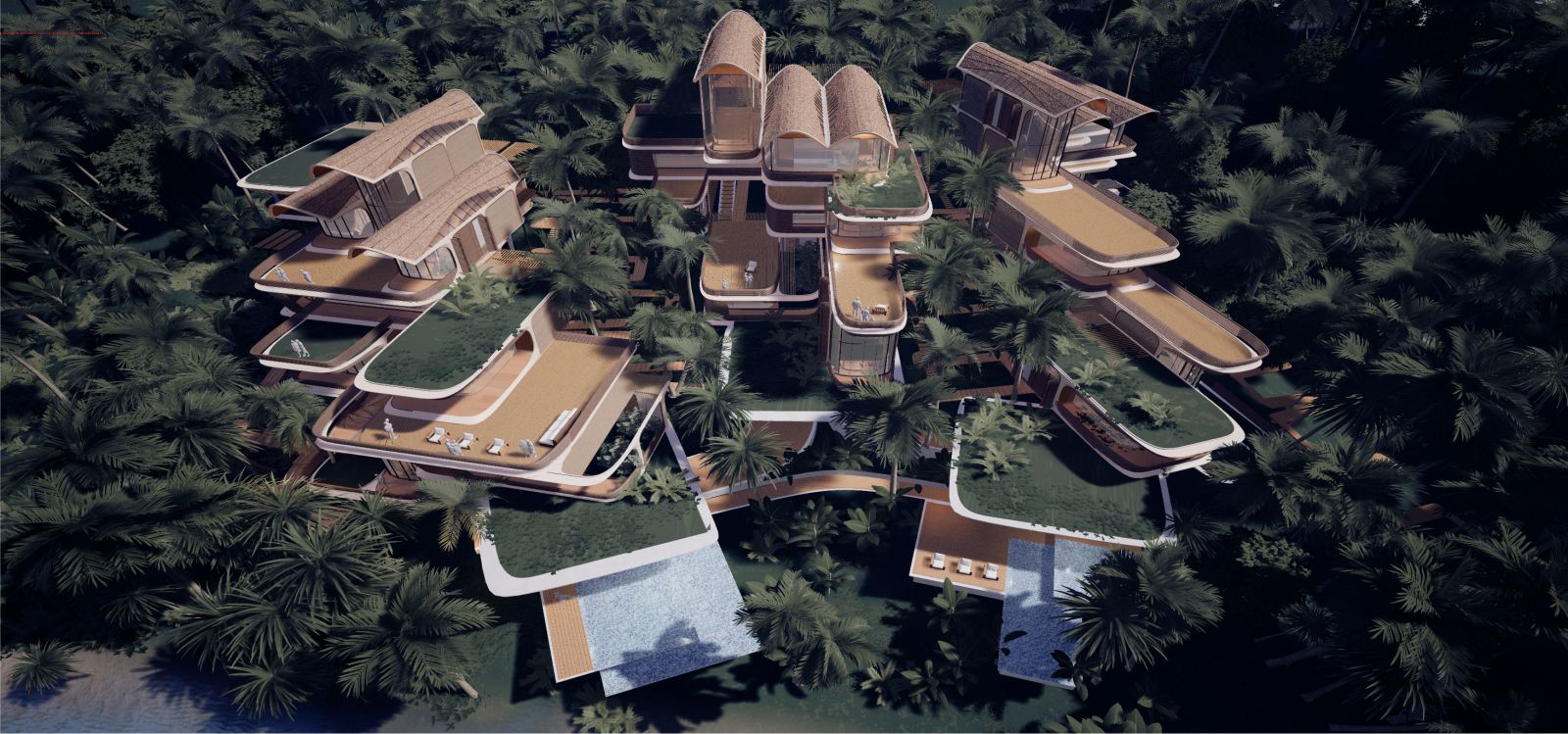
Image © Zaha Hadid Architects
This process also contributes to reducing the embedded construction energy and carbon footprint of the development. With considerable reductions in waste material, and a higher quality of construction due to the greater precision achieved by off-site fabrication, this modular system of assembly is a cost-controlled solution specifically tailored to local supply chains, transportation and installation. The dimensions of the structure’s base timber units have been established to follow the constraints of the local transportation networks to ensure carbon emissions and logistics costs are minimised.
Divided into a ‘kit of parts’ that is quickly assembled on site, the design approach is centered around ensuring local craftsmen, tradesmen and construction teams also benefit from the knowledge and experience obtained by working with new technologies; building lasting relationships between homeowners and the local community that will help new residents to integrate with local culture. Hilson Moran developed the design’s passive environmental control and water cycle strategies to minimize energy consumption by reducing temperatures to improve thermal comfort, with little or no requirements for mechanical ventilation.
Dynamic thermal modelling was used to validate user comfort and energy consumption parameters. Optimizing renewable resources to reduce energy consumption and generate water, the modules are designed to be self-shading, open and oriented towards the prevailing sea breeze for natural cooling. Local, natural materials and ground coupling provide further cooling to interior spaces. When required, water is removed from the atmosphere for supplementary cooling by dehumidification. This water is harvested and filtered and available for use in each home.
For self-sufficient and net zero carbon operations, shading canopies are optimally shaped to accommodate photovoltaic arrays for renewable power generation. Batteries will store renewable electricity for future use. The design for manufacture and assembly (DFMA) approach has been carefully instilled into the design of the structural kit of parts, while smart timber connections allow for quick assembly and disassembly, giving the potential to reconfigure the residence or recycle any element of the modular kit.
The digital configuration platform allows home-owners to plan their homes and connect with local suppliers; bringing the construction and operational benefits from the digitization of the buildings. The platform can be used to accommodate the specific spatial needs of family members, share resources and costs with neighbours and allow flexibility for communal modules such as a children’s play area. It also ensures that each home is fundamentally sustainable by using as little material and energy as possible in its construction and operation with the shapes of each element within the building being environmentally appropriate, particularly from a solar and ventilation perspective.
Particular care has been given to ensuring the designs are sustainable and feasible within the environment of Roatan; incorporating vernacular design features such as palapas and other naturally ventilated spaces, the use of locally sourced timber, passive shading, rain water collection and cooling-pools. A principle underpinning the configuration platform is three-dimensional property rights with homeowners acquiring occupational and exclusion rights for units of 3D space called volume-pixels or voxels. Their residences will be algorithmically computed to fit within their chosen arrangement of voxels.
Each voxel is 35 square meters in plan-area and 4 meters high. Residential units vary from 35 sq.m studios (1 voxel), to 175 sq.m family homes (5 voxels). This parametric approach to the design of each residence and overall composition of the development yields many different possibilities united by a coherent formal logic and materiality. Homeowners can use the platform to customize the spatial layout of their residence to fit their preferred number of voxels. These choices are exponential in nature, with at least 15,000 different variations to configure the maximum of 5 voxels.
The configuration platform adapts each residence to the terrain and other particulars of the site include views and minimizing any earthworks during assembly. The platform also gives a choice of built-in furniture modules and spatial arrangements to suit individual lifestyles and preferences. These modules include walk-in wardrobes and conversation pits and are designed to integrate into the walls or contained in islands within each room. Homeowners can also appoint local suppliers to create furniture specific for each room using the digital assets that the configuration platform provides including the 3D model of the home. Source by Zaha Hadid Architects.
- Location: Roatán Island, Honduras
- Architect: Zaha Hadid Architects
- Project Team: Patrik Schumacher (Principal), Shajay Bhooshan, Henry Louth, Vishu Bhooshan, Cesar Fragachan, Jianfei Chu, Federico Borello, Georgios Pasisis with support from Tommaso Casucci, Leo Bieling and Ryan Hughes
- Structural Engineering AKT II: Edoardo Tibuzzi, Gavin Sayers, Thomas Lejeune, Megan Greig
- Environmental Engineering Hilson Moran: Emlu Schembri, Amedeo Scofone
- Year: 2020
- Images: Courtesy of Zaha Hadid Architects

Image © Zaha Hadid Architects 
Image © Zaha Hadid Architects 
Image © Zaha Hadid Architects 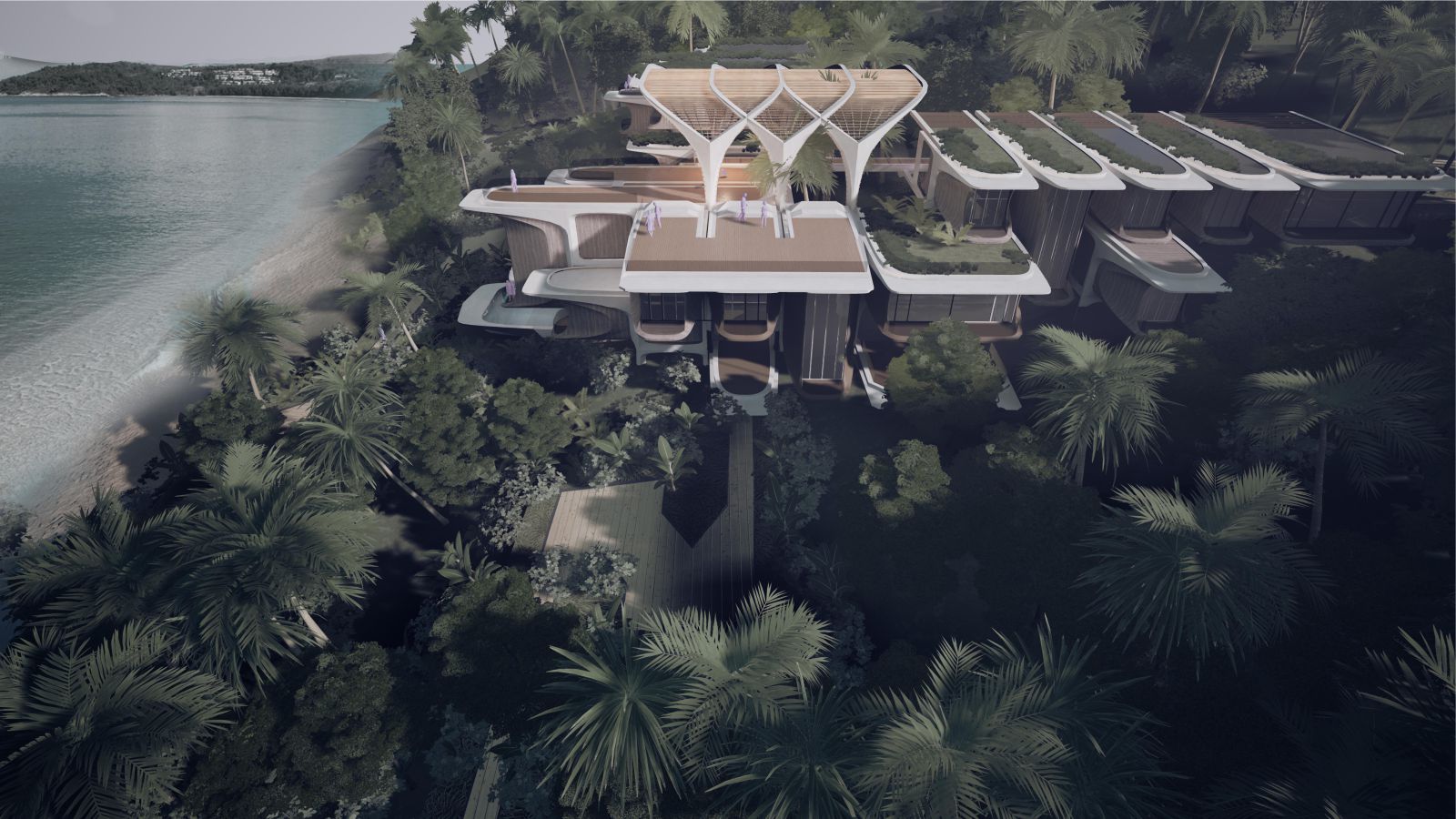
Image © Zaha Hadid Architects 
Image © Zaha Hadid Architects 
Image © Zaha Hadid Architects 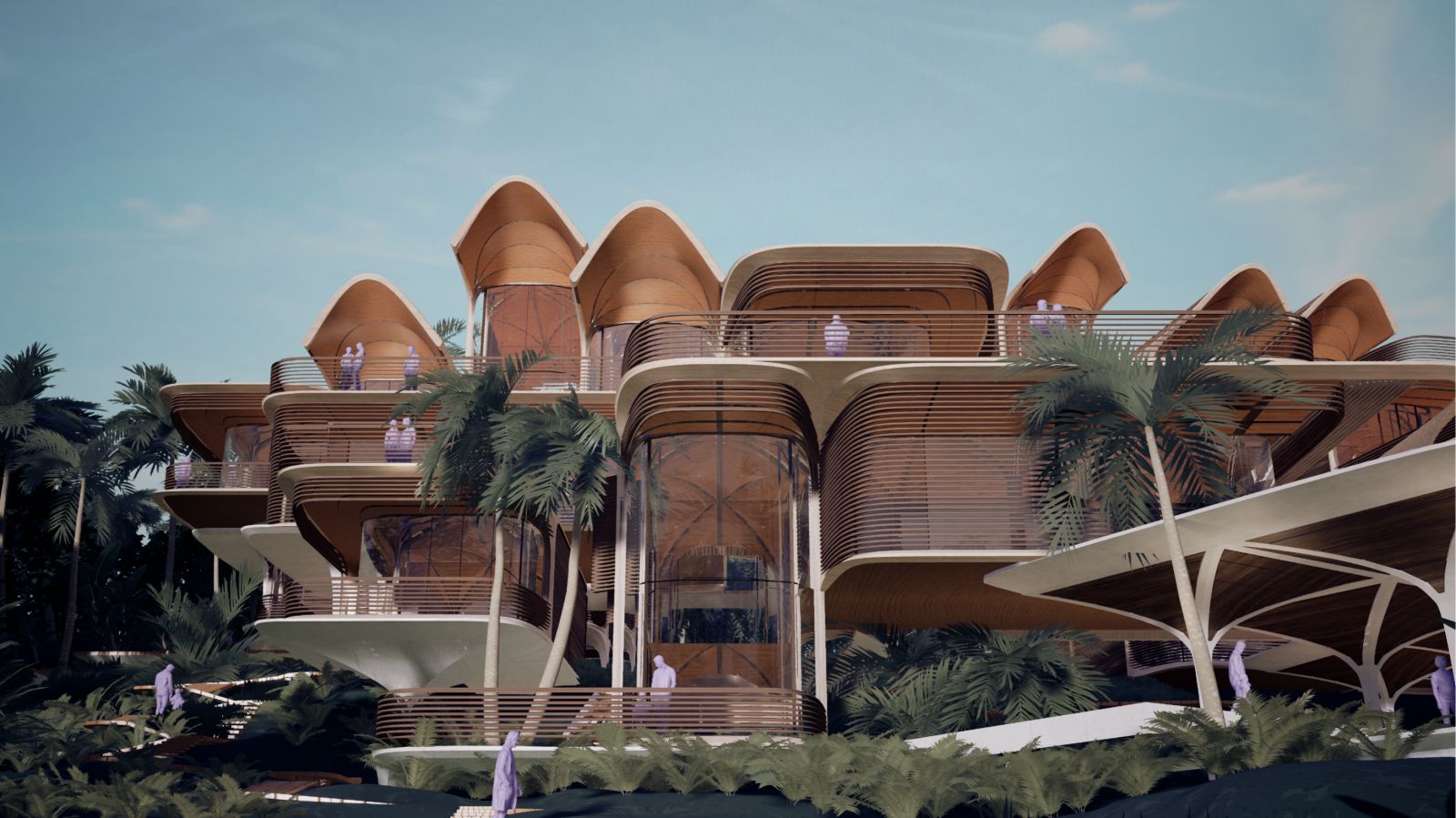
Image © Zaha Hadid Architects 
Image © Zaha Hadid Architects 
Image © Zaha Hadid Architects 
Image © Zaha Hadid Architects 
Image © Zaha Hadid Architects 
Image © Zaha Hadid Architects 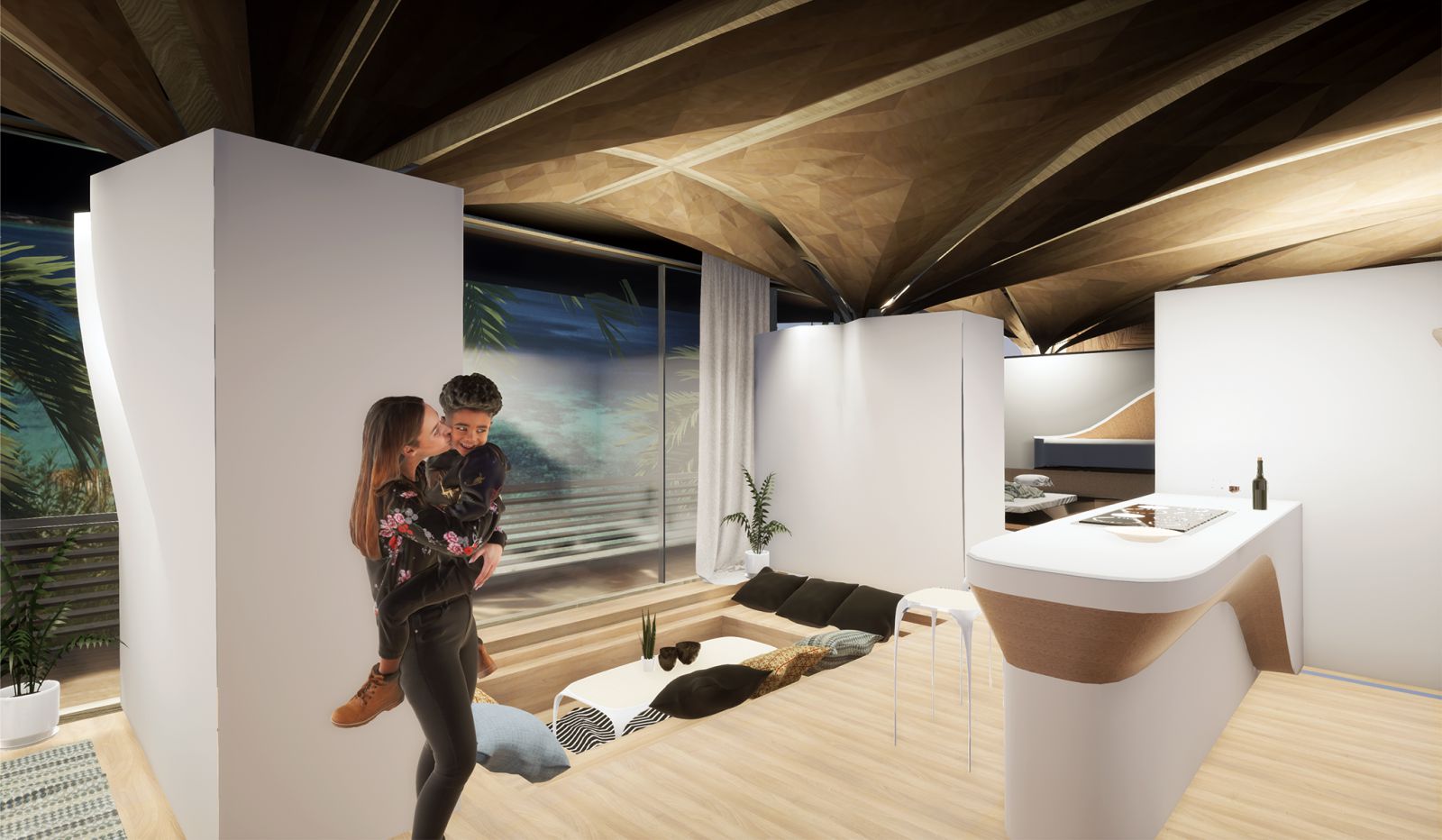
Image © Zaha Hadid Architects 
Diagram Environmental Passive 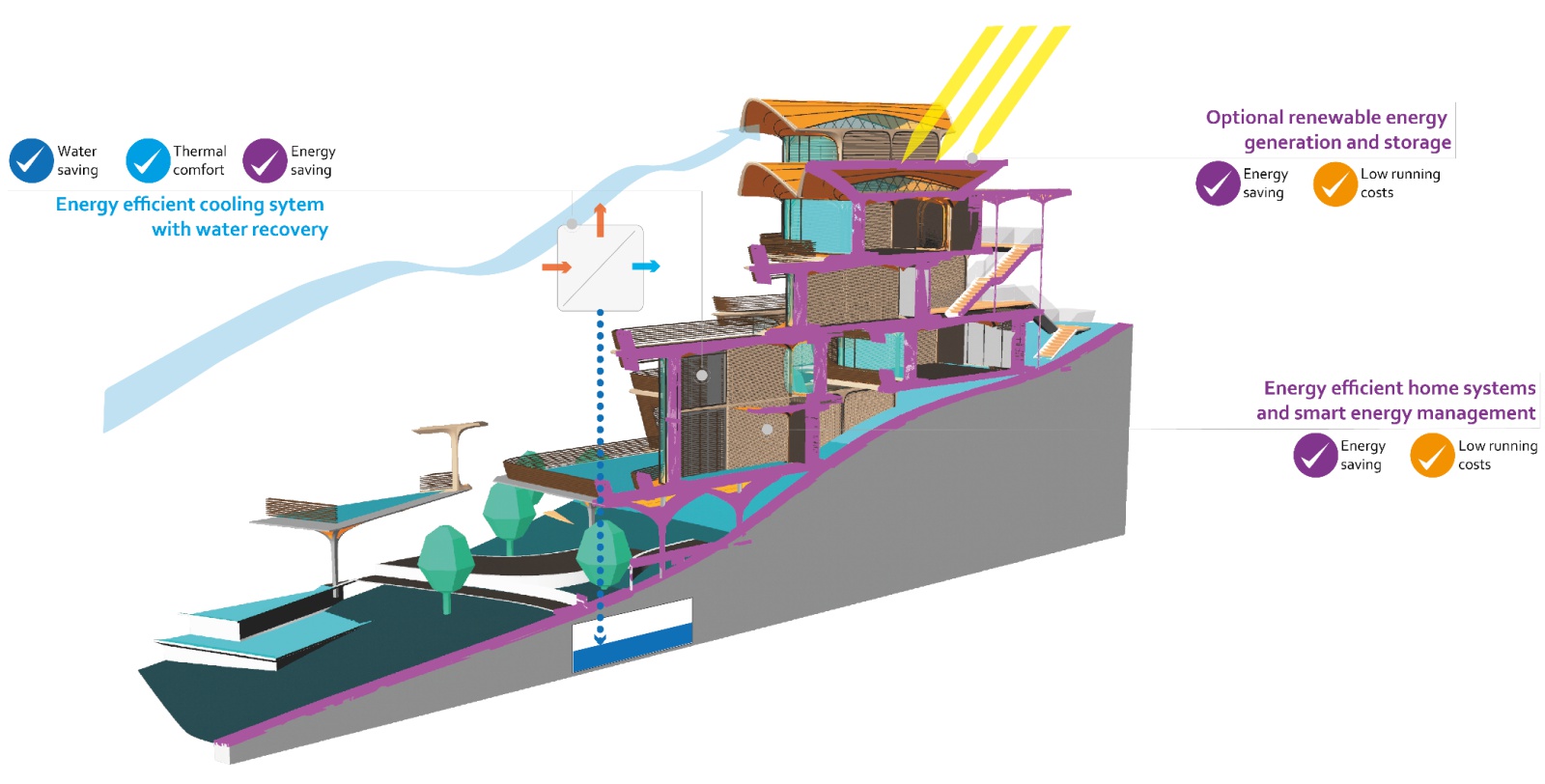
Diagram Environmental Active

